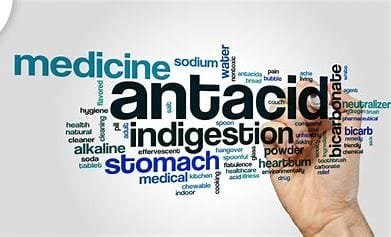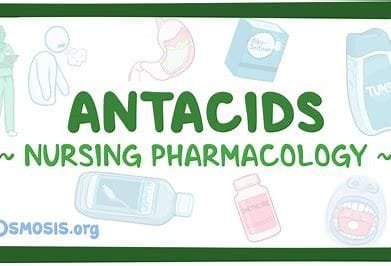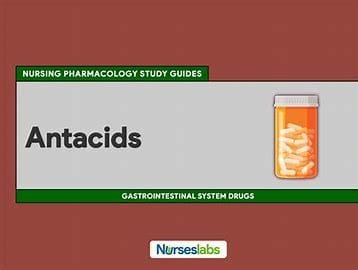Introduction

Antacids are part of the OTC medication that is applied in the alleviation of heartburn and indigestion. Its role cannot be overlooked for the management of gastrointestinal health in the light of the neutralization of extra acid produced by the stomach that causes pains and irritations to the esophagus. This is, in fact, where antacids become a remedy for individuals who feel chest or stomach burning after intake of a meal. This article will walk through the uses, formation, types, and advantages of antacids, discussing their crucial role in the digestive world in an overall context.
What Are Antacids?
Antacids are drugs designed to neutralize the acid of the stomach. They are mostly used for heartburn, a sour stomach, or acid indigestion. This happens because of a backflow of stomach acids up into the esophagus. When the stomach acid goes backward up into the esophagus, there can be a burning feeling that people refer to as heartburn. Antacids work to neutralize stomach contents to raise the pH level in them. It will lessen the corrosive effects of the acids on the stomach and esophageal linings.
Uses of Antacids
Relieving Heartburn: The common use for antacids is as a heartburn reliever—a burning feeling in the chest—an effect that occurs when some of the stomach acid flows back into the esophagus, irritating the linings.
Indigestion: Antacids are usually very effective to manage the condition that very often appears in the guise of a bloated abdomen, gas, or uncomfortable sensation in the stomach. Neutralization of the stomach acid would eliminate all these symptoms.
Control of Peptic Ulcer: The antacids do not provide a remedy but may ease the soreness arising from peptic ulcers by reducing acidity levels within the stomach. In this way, it might play the role of a buffer between the ulcerous area and provide relief against its agony and irritation.
GERD Management: GERD is chronic acid reflux in which the stomach acid repeatedly flows back into the esophagus. Antacids can be used for short-term relief of GERD symptoms, but other drugs are often necessary for long-term management.
Hyperacidity Treatment: Some people may have to produce more stomach acid than others, causing discomfort. The antacids reduce the acidity level, which gives relief.
Antacids normally comprise basic chemical components that are used to neutralize HCl in the stomach. The most common active ingredients in antacids are:
Calcium Carbonate: This is a quick-acting agent that will produce an immediate relief effect by neutralizing stomach acids. However, the continuous use of this causes constipation.
Magnesium Hydroxide: It also happens to be a rapid neutralizer with laxative action, so that its impact of causing constipation through calcium carbonate is often reversed.
Al Hydroxide: It combines with magnesium hydroxide to alleviate symptoms but promotes constipation if taken in large amounts.
Sodium Bicarbonate: This active ingredient in baking soda will neutralize stomach acid with effective relief. However, with much sodium, it is used over a short period and contraindicated in conditions of high blood pressure in patients.
The formulation of antacids is based on the combination of these ingredients in balanced amounts to neutralize stomach acid without major side effects. Some types of antacids may also contain flavoring agents to make them more tasteful and acceptable to consumers.
Types of Antacids
Tablet Antacids: These are chewable or swallowable tablets. They are very convenient for on-the-go use and usually contain compounds like calcium carbonate, which neutralizes acid quickly. Some tablets are chewable, making them easier to digest and faster acting.
Liquid Antacids: Liquid antacids often work faster than tablets as they cover the stomach lining more evenly. They’re generally preferred for immediate relief and are particularly effective for soothing the esophagus.
Effervescent Tablets: These effervescent tablets dissolve quickly in water, creating a fizzy solution that may be rapidly absorbed. It usually contains high sodium bicarbonate content, which gives good neutralization of the acid quickly.
Gel-based Antacids: It combines a gel containing antacid properties to give prolonged action by coating the lining of the stomach to create a longer relief in the case of traditional liquid antacids. Gels are less common but more valued for their extended action duration.
Antacid-Alginates: Alginates form a gel-like layer atop the stomach contents. Thus, it creates a protective cover so that the acids cannot reach the esophagus. This one type is particularly helpful to counter reflux symptoms, as it not only helps to neutralize the acid but also prevents its movement to the esophagus to the greatest extent.
Benefits of Antacids

Quick Relief: Antacids act pretty fast and bring relief to the sufferer within minutes from the onset of heartburn or acid indigestion. The fast onset of action makes them very suitable for the management of acute distress.
Readily Available Over the Counter: As they are easily available without prescription, access is granted to individuals who do not have ready availability of a health care provider.
There are a variety of forms with antacids, which include tablets, liquids, gels, and effervescent forms. This means one can easily identify the drug form that is suitable for him or her.
Safety profile: Antacids are well tolerated when administered at the prescribed doses. They have few side effects compared to other more potent acid-reducing drugs, like proton pump inhibitors (PPIs).
Prevention of acid damage: The antacid will neutralize the acidity of the stomach, meaning that the acid will no longer destroy the lining on the esophagus and the stomach. This is, therefore, very helpful, especially for people suffering with GERD or hyperacidity condition.
Limitations and Considerations
These can only be used for short-term effects of treatment and may not be appropriate for the management of chronic care. GERD is usually accompanied by changes in lifestyle and use of prescription drugs. The side effects of frequently used antacids would include constipation, diarrhea, and disturbances in electrolytes, among others. They should, therefore, consult with a health professional who could decide if their treatment approach needs adjustment.
Interaction with other drugs also needs to be considered when using antacids. Antibiotics may be interfering with some medications that are in use, such as antibiotics and iron supplements; thus, the best advice would be to separate them when they are being used.
Conclusion

Antacids prove to be very important in helping manage heartburn, indigestion, and any other associated symptom. Given the many varieties and their ingredients, these are the flexible quick fixes for individuals that experience heartburn from time to time. While considered safe, users should know about potential side effects and interactions with other drugs. For chronic problems, the best course of action would be to consult a health care provider to explore options beyond over-the-counter antacids. In short, antacids are an effective, accessible solution for neutralizing stomach acid and providing rapid relief for a range of acid-related conditions



